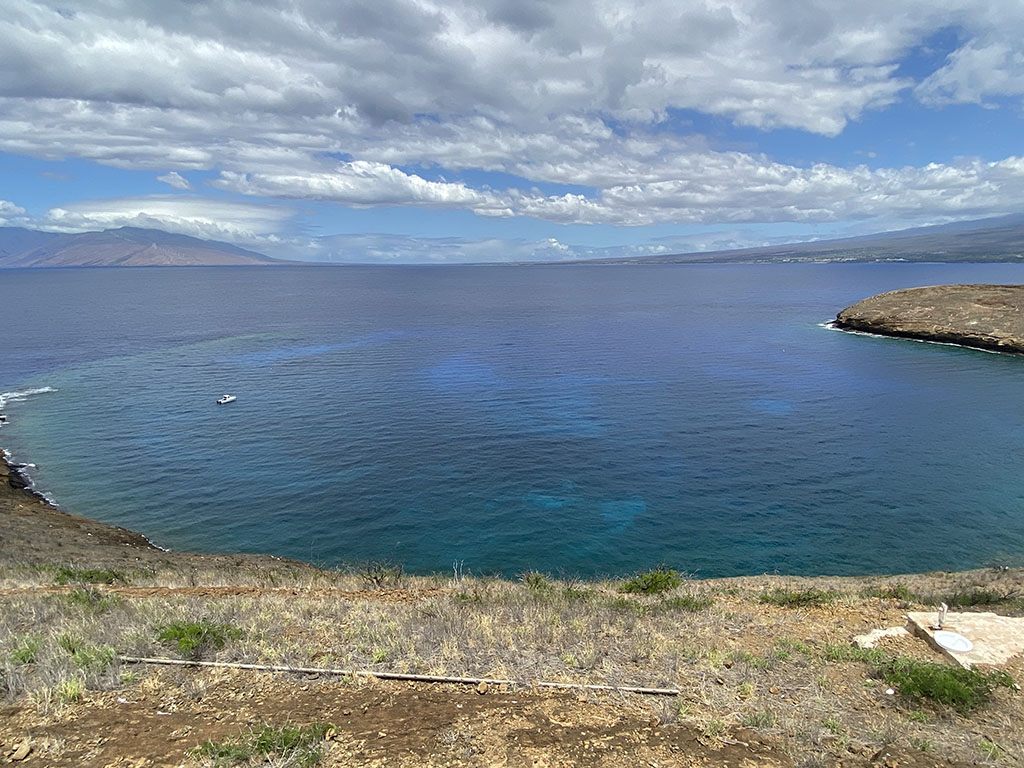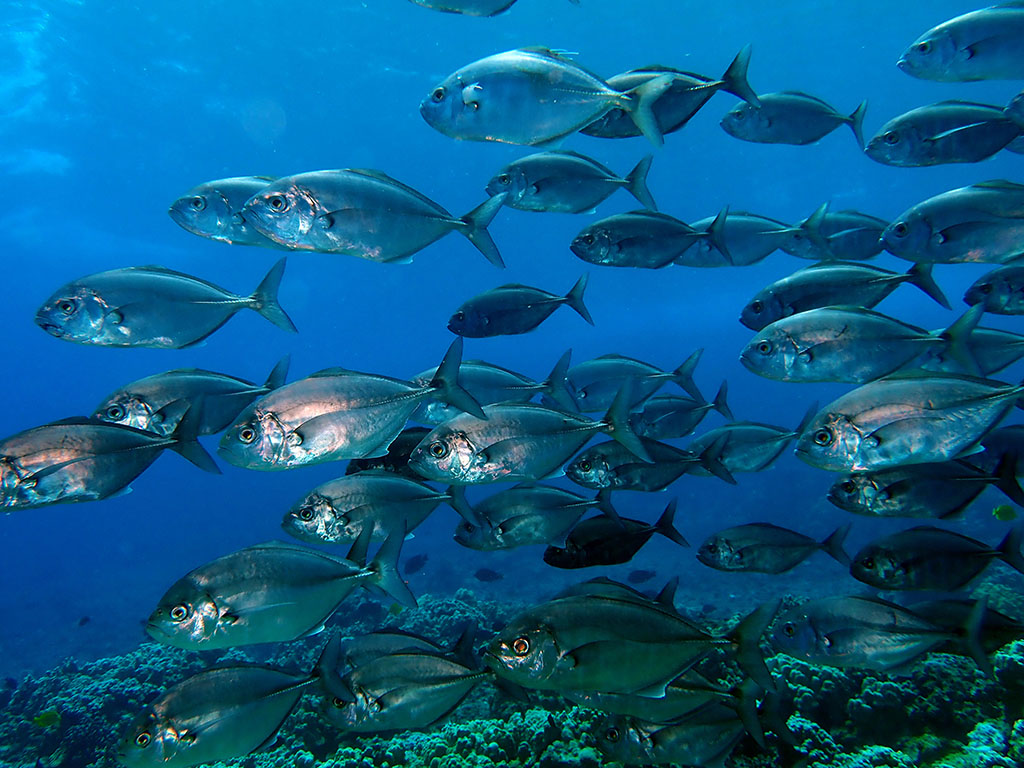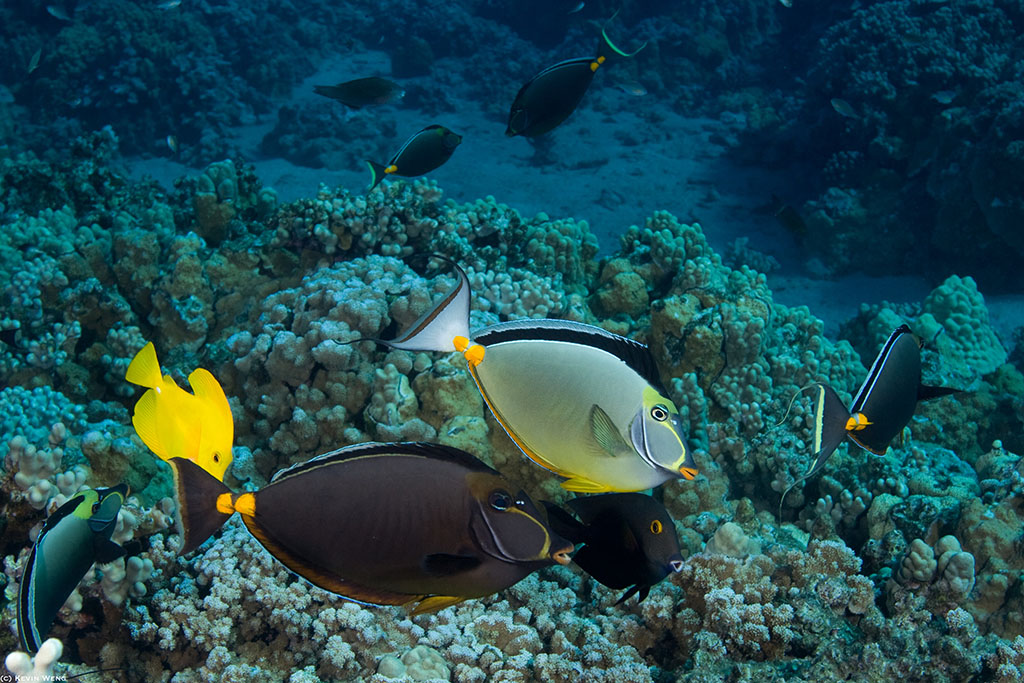4/24/23 – Measuring the impacts of tourism on marine ecosystems
By Russell Sparks, Maui District Aquatic Biologist
For years, scientists and resource managers have been trying to figure how to accurately measure the impacts of high-density marine tourism on Hawaii’s coral reef ecosystems. Local fishers have raised concerns about these activities displacing the fish they’re trying to catch. Most of Hawai‘i’s fully protected marine reserves are off limits to fishing while being highly visited by tourists. Scientists, however, cannot accurately investigate these non-fishing related impacts without being able to control the level of human use in specific areas of interest.
In early 2020, the global COVID-19 pandemic and subsequent lock downs on tourism in Hawai‘i presented a unique opportunity to study these tourism impacts. The Molokini Marine Life Conservation District (MLCD) offered up an ideal study location. Suddenly, the daily number of visitors to Molokini dropped from over 1,000 people each day to nearly zero. This presented the perfect opportunity to study the impacts of high-density marine tourism by looking at how previously crowded marine ecosystems responded to prolonged periods of little to no human presence.
Biologists from the Maui Division of Aquatic Resources (DAR) reached out to collaborate with researchers from the Virginia Institute of Marine Biology and the National Geographic Society. With no funding to support their work, a local Non-Profit Organization (The Maui Nui Marine Resource Council) stepped up to help raise money and to arrange for various in-kind contributions to the project. In-water fish and habitat surveys were conducted during the pandemic lock down periods with no tourism, then replicated as tourism numbers slowly increased over time. In addition, these surveys were compared with work conducted prior to the pandemic. ‘Ōmilu (Caranx melampygus), a common predatory fish, were tagged along with other key coral reef predators such as sharks and other jack species. Their movement patterns were carefully monitored with special acoustic tags and receivers. These tagging efforts allowed the researchers to compare how the fish used the area in relation to changes in the level of human presence.
This research effort demonstrated that human presence does significantly alter the community structure of the Molokini MLCD. Key reef predators, like ‘ōmilu, were found to use the shallow waters of this area extensively during periods of low human presence. However, when tourism returned, they were displaced outside of the shallow protected waters into deeper, less preferred habitats. Large schools of other jack species were observed spending the entire day within the reserve during the pandemic lock downs, but quickly disappeared once tourists began to return. This research demonstrates that the Molokini MLCD is being over-used and that better management is needed to improve the ecosystem health and visitor experience. Resource managers at DAR hope to use this information to help improve the management of all highly visited marine tourism destinations. In addition, DAR hopes to anticipate tourism impacts and appropriately plan for and regulate them with any future designations of marine managed areas.
The results of this study were published April 12, 2023 in the journal PLoS One, and can be viewed at this link.

A typical day within the Molokini MLCD

The Molokini MLCD during COVID-19 pandemic lockdown. The Maui DAR vessel is the only boat present in the reserve.

Jacks in Molokini MLCD

Surgeonfish in Molokini MLCD. Photo by Kevin Weng.
